Abstract
The primary and ultimate biodegradability of phthalic acid, monobutyl phthalate, and five structurally diverse phthalic acid ester plasticizers in river water and activated sludge samples were determined via ultraviolet spectrophotometry, gas chromatography, and CO2 evolution. The compounds studied underwent rapid primary biodegradation in both unacclimated river water and acclimated activated sludge. When activated sludge acclimated to phthalic acid esters was used as the inoculum for the CO2 evolution procedure, greater than 85% of the total theoretical CO2 was evolved. These studies demonstrate that the phthalic acid ester plasticizers and intermediate degradation products readily undergo ultimate degradation in different mixed microbial systems at concentrations ranging from 1 to 83 mg/liter.
Full text
PDF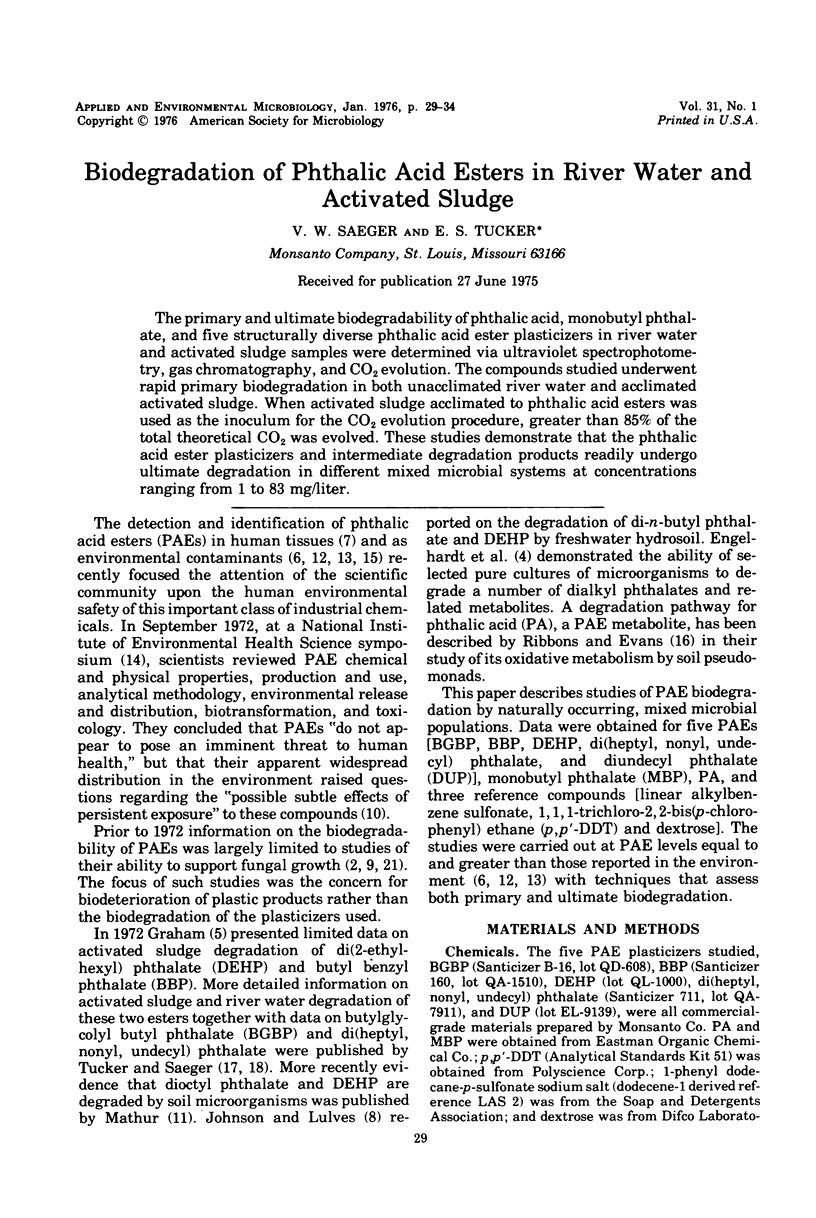
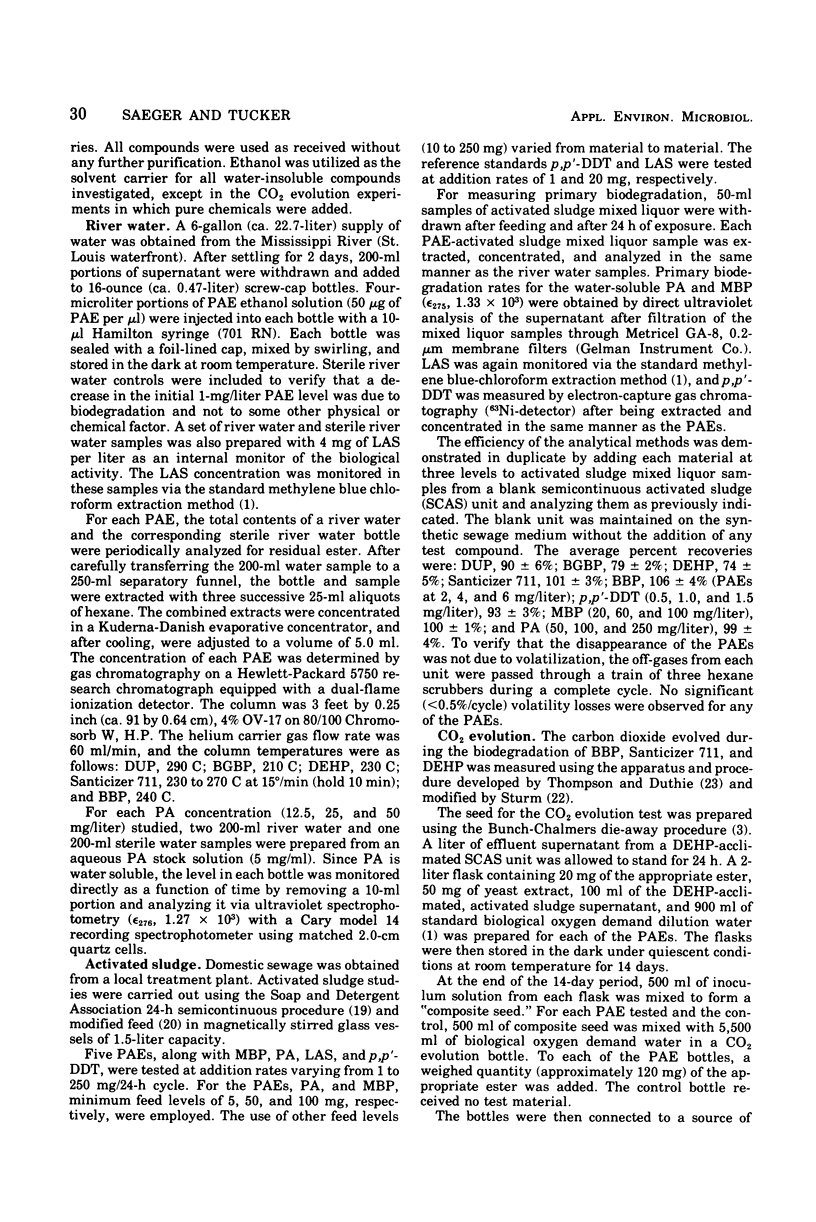
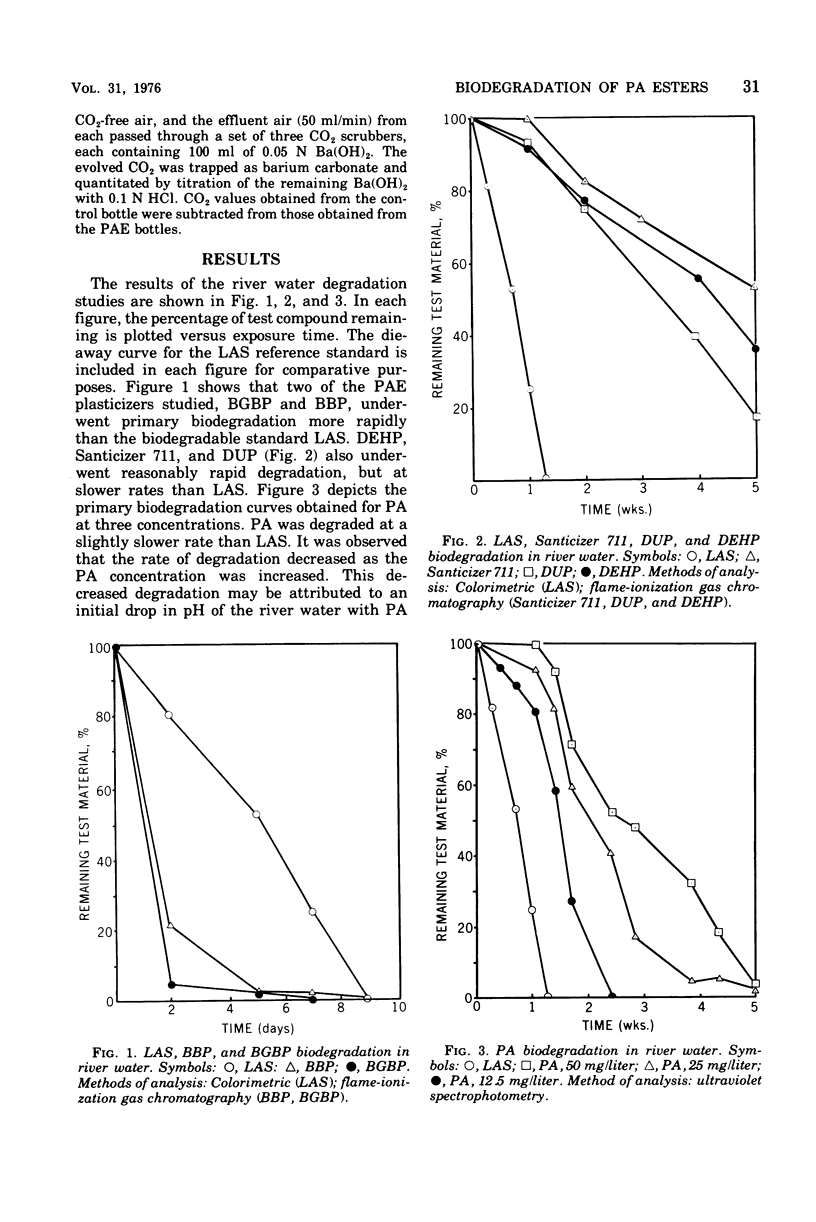
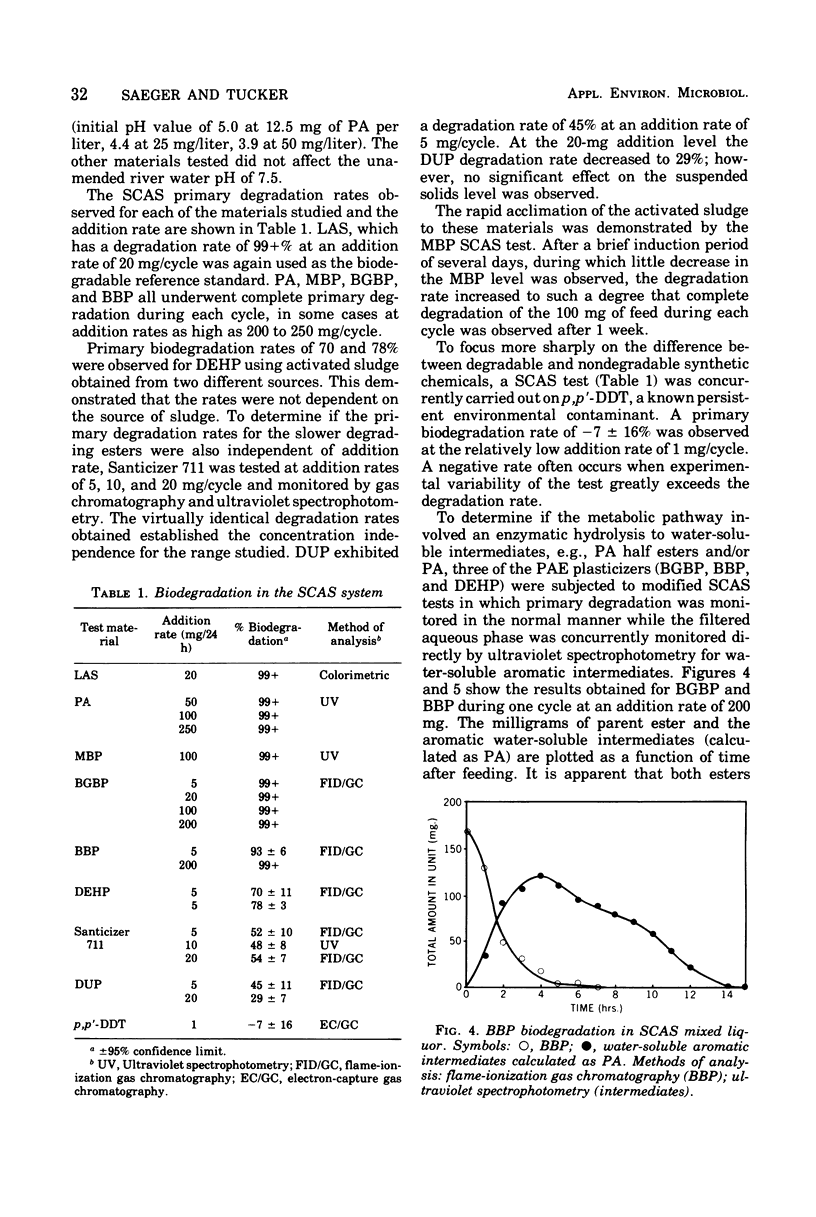
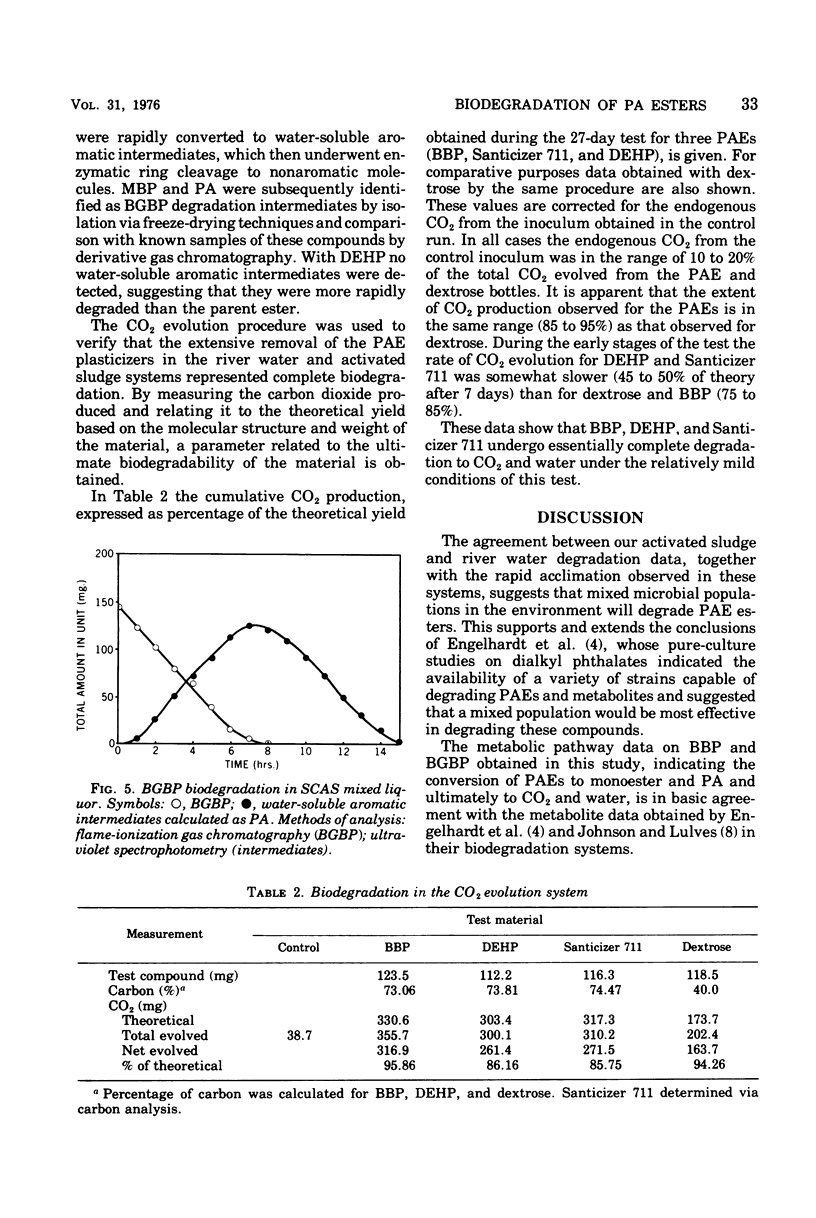

Selected References
These references are in PubMed. This may not be the complete list of references from this article.
- Bunch R. L., Chambers C. W. A biodegradability test for organic compounds. J Water Pollut Control Fed. 1967 Feb;39(2):181–187. [PubMed] [Google Scholar]
- Englehardt G., Wallnöfer P. R., Hutzinger O. The microbial metabolism of di-n-butyl phthalate and related dialkyl phthalates. Bull Environ Contam Toxicol. 1975 Mar;13(3):342–347. doi: 10.1007/BF01685348. [DOI] [PubMed] [Google Scholar]
- Graham P. R. Phthalate ester plasticizers--why and how they are used. Environ Health Perspect. 1973 Jan;3:3–12. doi: 10.1289/ehp.73033. [DOI] [PMC free article] [PubMed] [Google Scholar]
- Hites R. A., Biemann K. Water pollution: organic compounds in the Charles River, Boston. Science. 1972 Oct 13;178(4057):158–160. doi: 10.1126/science.178.4057.158. [DOI] [PubMed] [Google Scholar]
- Jaeger R. J., Rubin R. J. Plasticizers from plastic devices extraction, metabolism, and accumulation by biological systems. Science. 1970 Oct 23;170(3956):460–462. doi: 10.1126/science.170.3956.460. [DOI] [PubMed] [Google Scholar]
- Marx J. L. Phthalic acid esters: biological impact uncertain. Science. 1972 Oct 6;178(4056):46–47. doi: 10.1126/science.178.4056.46. [DOI] [PubMed] [Google Scholar]
- Mayer F. L., Stalling D. L., Johnson J. L. Phthalate esters as environmental contaminants. Nature. 1972 Aug 18;238(5364):411–413. doi: 10.1038/238411a0. [DOI] [PubMed] [Google Scholar]
- Ogner G., Schnitzer M. Humic substances: fulvic acid-dialkyl phthalate complexes and their role in pollution. Science. 1970 Oct 16;170(3955):317–318. doi: 10.1126/science.170.3955.317. [DOI] [PubMed] [Google Scholar]
- Ribbons D. W., Evans W. C. Oxidative metabolism of phthalic acid by soil pseudomonads. Biochem J. 1960 Aug;76(2):310–318. doi: 10.1042/bj0760310. [DOI] [PMC free article] [PubMed] [Google Scholar]
- STAHL W. H., PESSEN H. The microbiological degradation of plasticizers. I. Growth on esters and alcohols. Appl Microbiol. 1953 Jan;1(1):30–35. doi: 10.1128/am.1.1.30-35.1953. [DOI] [PMC free article] [PubMed] [Google Scholar]
- Sturm R. N. Biodegradability of nonionic surfactants: screening test for predicting rate and ultimate biodergradation. J Am Oil Chem Soc. 1973 May;50(5):158–167. doi: 10.1007/BF02640470. [DOI] [PubMed] [Google Scholar]
- Thompson J. E., Duthie J. R. The biodegradability and treatability of NTA. J Water Pollut Control Fed. 1968 Feb;40(2):306–319. [PubMed] [Google Scholar]


